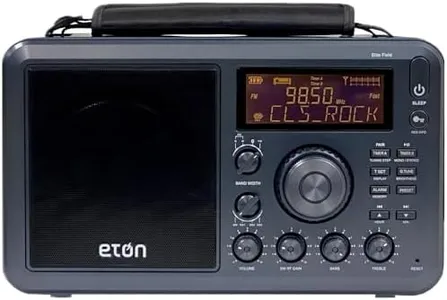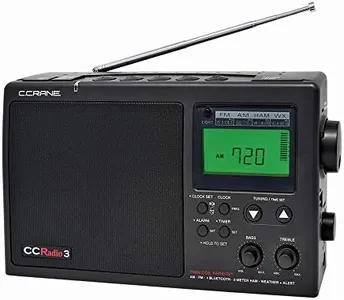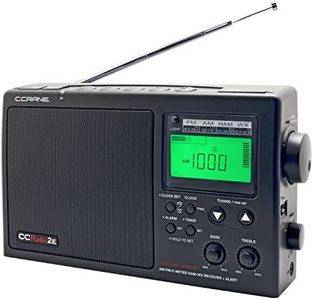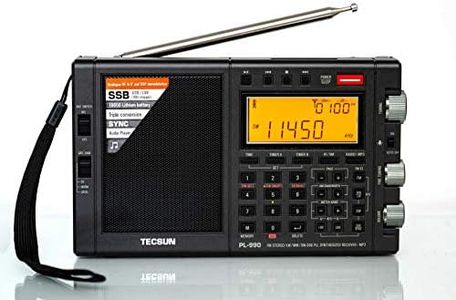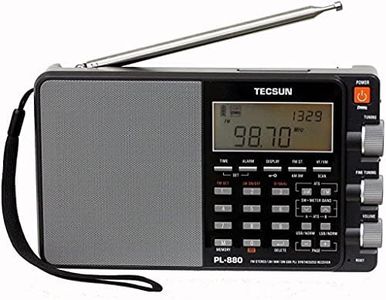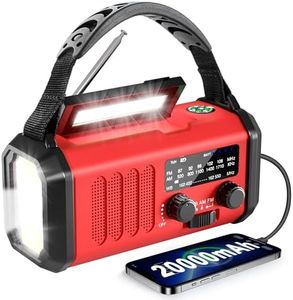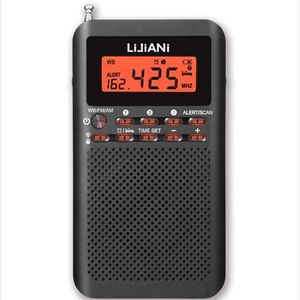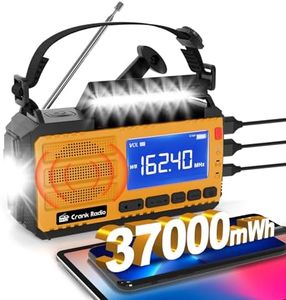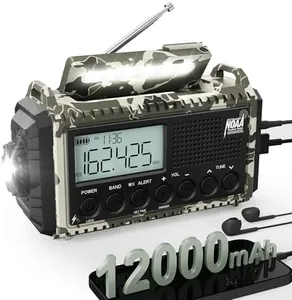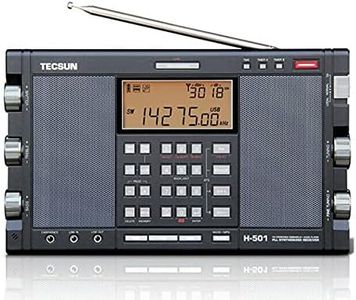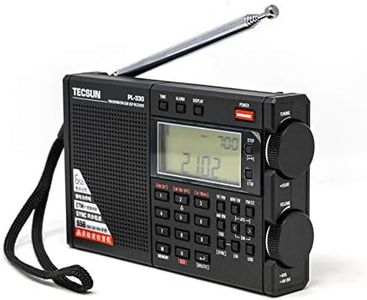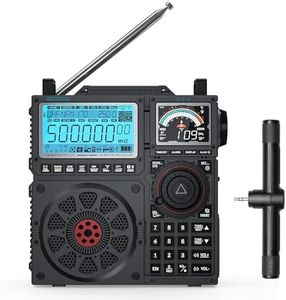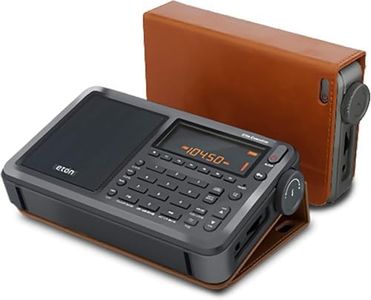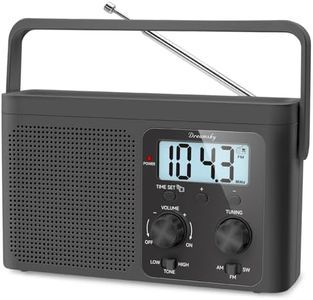10 Best Shortwave Radios 2025 in the United States
Our technology thoroughly searches through the online shopping world, reviewing hundreds of sites. We then process and analyze this information, updating in real-time to bring you the latest top-rated products. This way, you always get the best and most current options available.

Our Top Picks
Winner
Eton Elite Field Radio with AM/FM, Shortwave, RDS, Bluetooth, Digital Tuning, Treble/Bass Control, 50 Memory Stations, External Antenna, Rich LCD Display, Retro Tabletop Design
Most important from
720 reviews
The Eton Elite Field Radio is a versatile device that covers AM/FM and Shortwave bands, making it suitable for radio enthusiasts. Its Bluetooth feature allows you to stream your favorite music. The radio is designed for exceptional reception with strong anti-interference technology, ensuring clear and reliable performance.
You can fine-tune your listening experience with its RF gain control and treble/bass adjustment. Having 50 memory stations makes it easy to access your preferred channels quickly, and the built-in alarm and sleep timer add extra convenience. The radio's external antenna connections and FM telescopic antenna enhance signal reception, and the Local/DX switch helps optimize signal based on your location.
However, its size and weight (5.25 pounds, 12.4 x 6.5 x 3 inches) might not be ideal for those looking for a truly portable option. Additionally, while the rich LCD display is a plus, its retro tabletop design may not appeal to everyone. If you need a reliable shortwave radio with good sound quality and additional features like Bluetooth, the Eton Elite Field Radio is a solid choice, especially for home use. However, it may not be the best option if you require a lightweight, highly portable device.
Most important from
720 reviews
C. Crane CCRadio 3 Long Range Reception AM, FM, NOAA Weather Plus Alert and 2-Meter Ham Band Portable Digital Radio with Bluetooth
Most important from
470 reviews
The C. Crane CCRadio 3 is a solid choice for those looking for a reliable shortwave and AM/FM radio with good long-range reception. It covers multiple bands including AM, FM, NOAA weather alerts, and even the 2-Meter Ham Band, which is great for emergency communication. Its patented Twin-Coil Ferrite AM antenna helps pull in distant AM stations clearly, and FM reception is strong enough to bring weak stations in without much static. Bluetooth connectivity is a bonus, allowing you to stream audio from your phone or smart speaker, which expands listening options beyond traditional radio.
The radio is designed with user-friendly tuning and offers 5 one-touch memory presets per band, making it easy to switch between favorite stations. It also includes handy features like a clock, alarm, sleep timer, adjustable display brightness, and a headphone jack. Portability is decent—the radio weighs about 4 pounds and runs on 4 D batteries (not included), providing up to approximately 250 hours of playtime at moderate volume. This makes it convenient for outdoor use or emergency kits.
However, the radio is somewhat larger and heavier than ultra-portable models, which might be less ideal if you need something very compact. While the sound quality is clear and pleasant for voice, it may not satisfy users wanting high-fidelity audio. Also, though it includes a weather band with alerts, it does not have shortwave coverage beyond the ham band, so it may not cover all shortwave listening interests. Lastly, the price may be higher compared to simpler radios, but the enhanced features and build justify it for many. This radio suits listeners who want dependable, long-range AM/FM reception, emergency features, and added Bluetooth functionality packed into a portable unit. It is particularly useful for emergency preparedness and casual shortwave or ham band users, but less optimal if you prioritize ultra-lightweight design or extensive shortwave band coverage.
Most important from
470 reviews
C. Crane CCRadio-2E Enhanced Portable AM FM Weather and 2-Meter Ham Band (Black) CC2BE
Most important from
911 reviews
The C.Crane CCRadio-2E is a solid choice if you want a portable radio that covers AM, FM, NOAA weather alerts, and even the 2-Meter Ham band for emergency communication. Its standout feature is the Twin-Coil Ferrite Antenna, which delivers strong AM reception, making it easier to pick up distant stations clearly. The radio is fairly lightweight at 4 pounds, and can run for up to 250 hours on four D-sized batteries, which is well suited for long outdoor use or emergencies without access to power. You can also use the included AC power cord when indoors.
Tuning is straightforward with five one-touch memory presets, a display light, and a headphone jack for private listening. It also includes handy extras like a clock, alarm, and sleep timer. While the radio doesn’t specifically mention shortwave bands beyond the 2-Meter Ham band, it covers key frequencies for general listening and emergency alerts effectively.
A minor downside is that it uses fairly large batteries, which may be less convenient than rechargeable options. Additionally, it lacks digital tuning, so you might need a bit of patience to find exact frequencies. This radio is well suited for users who want a reliable, easy-to-use device for AM/FM listening, weather updates, and emergency preparedness rather than someone seeking comprehensive shortwave coverage.


